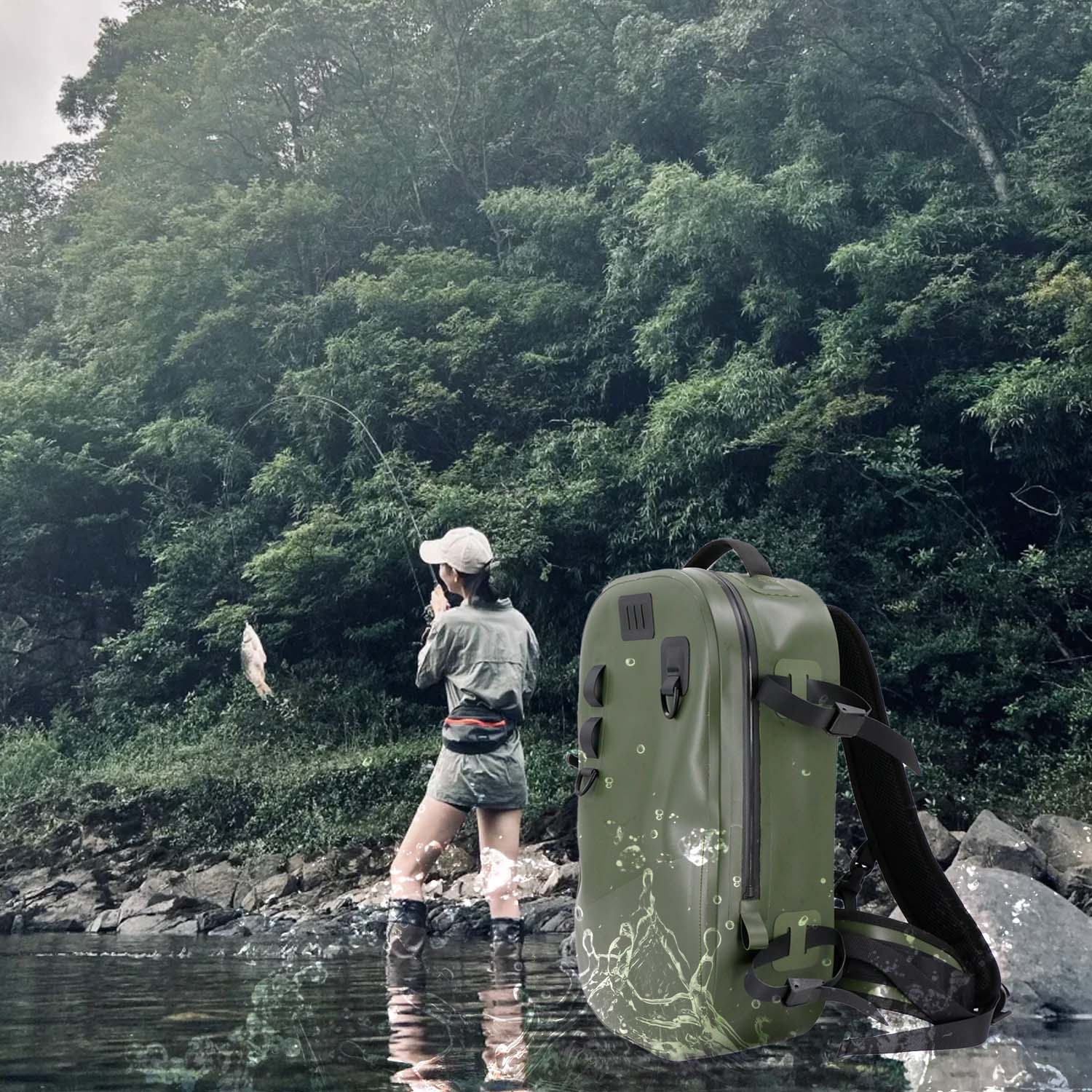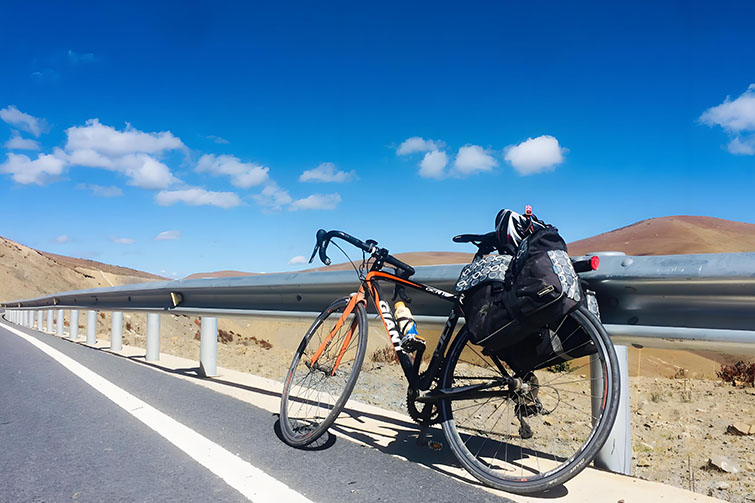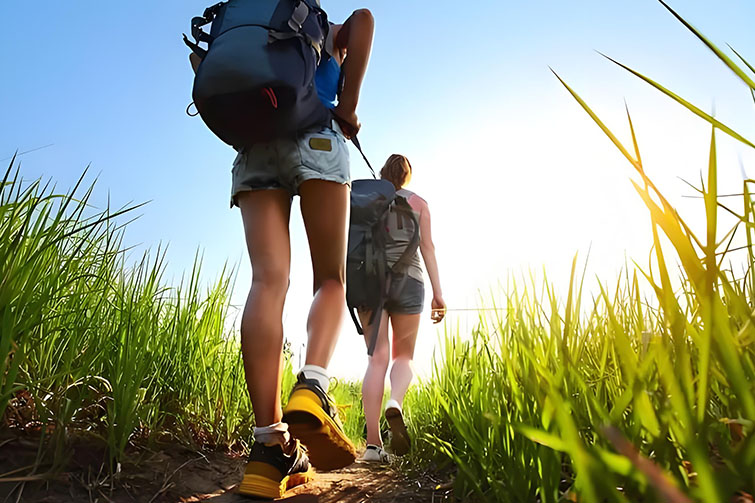

How to Choose the Right Fishing Bag in 3 Minutes
As an angler who’s been obsessed with lure fishing for 3 years, I’ve made my fair share of mistakes with fishing gear—especially fishing bags. Some claimed to be waterproof but soaked my phone in light rain; others had messy storage that tangled hooks, lures, and spare lines (I once wasted 3 minutes digging for a sinking lure while a bass got away); still others were so heavy that my shoulders ached after a 2km walk to my fishing spot. It wasn’t until I got this airtight, waterproof wading fishing bag last month that all my pain points vanished.
Today, I’ll turn my real-world experience into a practical buying guide—so you can skip the mistakes and pick a fishing bag that actually works for you.
1. First Rule: Don’t Fall for “Fake Waterproof” – Check These 2 Points
Waterproofing is non-negotiable for fishing. Sudden rain, wading in streams, or accidental splashes can ruin your gear (I once nearly lost a backup phone to a leaky bag!). Here’s how to spot real waterproofing:
- Airtight Zippers > Regular Waterproof Zippers: Industrial-grade airtight zippers are a game-changer. They seal tightly when closed, blocking water from seeping through gaps. I tested mine by submerging the bottom half of the bag in a stream for 10 minutes—tissues inside stayed completely dry! Avoid bags with just “water-resistant” zippers; they’ll fail in heavy moisture.
- Full-Body Waterproof Fabric: Look for bags made of 420D nylon or polyester with a thick PU coating (check the product specs!). The fabric should cover every part of the bag, not just the outer layer. My bag’s fabric repels rain like a shield—even after two thunderstorms, my pliers, lure boxes, and spare socks stayed dry inside.
- Pro tip: Choose a bag with a separate waterproof inner pouch for electronics (phones, power banks) and valuables. It adds an extra layer of protection, so you won’t have to stuff your phone in your sweaty pocket.
- 2. Storage: It’s Not About “Big Capacity” – It’s About “Smart Partitioning”
- Lure anglers have tons of gear: soft lures, hard lures, hooks (by size), scissors, dehookers, spare spools… A bag with one big compartment is a disaster (trust me, I’ve been there). Prioritize these storage features:
- Dedicated Lure Compartment with Adjustable Dividers: This lets you sort soft lures and hard lures into separate sections. I can grab the exact lure I need in 2 seconds now—no more fumbling.
- Side Mesh Pockets with Straps: These are perfect for water bottles (500ml fits just right) and lure rods. The straps keep rods from swinging around when you walk, and mesh lets you see what’s inside.
- Hidden Back Pocket: Great for small essentials like fishing licenses, cash, or keys. It’s out of the way but easy to reach, and keeps items safe from splashes.
- Capacity-wise: A 30-35L bag works for most day trips. Mine holds all my lure gear, a quick-dry shirt, a towel, and lunch—no need for extra bags.
- 3. Comfort: Lightweight + Ergonomics = No More Sore Shoulders
- A heavy bag can ruin your fishing trip before it even starts. I once bought a “professional lure bag” that weighed 2kg empty—add gear, and it hit 5kg! My shoulders were bruised after a short walk. Here’s what to look for:
- Weight Under 1.5kg (Empty): The best fishing bags balance durability and lightness. My current bag weighs only 1.1kg empty—even fully loaded (around 3.5kg), it feels easy to carry.
- Ergonomic Straps & Back Panel:
- S-shaped shoulder straps with thick foam fit the curve of your shoulders, so they don’t dig in.
- A breathable mesh back panel stops sweat buildup. On a 30°C day, I walked 5km, and my back stayed mostly dry (a huge upgrade from regular bags!).
- Adjustable Waist Belt: This distributes weight to your waist, not just your shoulders. It keeps the bag stable on rocky trails or when wading—you can use both hands to climb or hold your rod.
- 4. Bonus: Pick a Bag That Works for Multiple Scenarios
- Why buy a single-use bag? The best fishing bags are versatile:
- Use it for lure fishing (store lures and tools).
- Use it for wading or bait fishing (waterproof design protects tackle).
- Even use it for hiking (swap fishing gear for snacks and a first-aid kit—side pockets fit trekking poles!).
- My bag has become my “all-in-one outdoor bag”—I take it everywhere, not just fishing spots.
- Final Tip: Quality Beats Quantity
- I used to think, “A bag just needs to hold stuff.” But bad bags waste time, ruin gear, and kill the joy of fishing. A good fishing bag saves you hassle, protects your equipment, and makes every trip more enjoyable.
- If you’re tired of leaky, messy, or heavy bags—give an airtight, waterproof, well-designed fishing bag a try. Your shoulders (and your lures) will thank you!
- What’s your worst experience with a fishing bag? Have you found a “game-changer” bag? Share in the comments—let’s help each other fish smarter!







